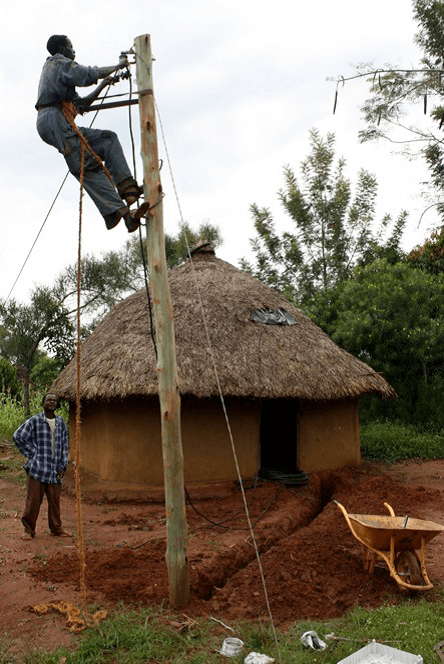
The Rise of the MiniGrid – Part 1 of 2
Tweet this: #minigrid #SHS #diesel #solar #climatechange #ruralparadigm
Access this blog in Portuguese / Aceder esta blogue em portuguese
In this two-part blog we explore the rise of the minigrid and its role in addressing the “rural paradigm”. We thrive on feedback and encourage you to share your thoughts and ideas on the topic.
Kerosene, firewood/charcoal and diesel fuel are often the predominant energy choices for most people in developing countries but not necessarily the most affordable, safe nor sustainable ones – indoor air pollution kills more than 1.3 million people globally every year [IEA]; forests are being cut down at an alarming pace which has serious ecosystem-level implications – less CO2 is sequestered in trees, soil erosion increases, biodiversity diminish – e.g. even the no. 1 oil producer in Africa, Nigeria, relies on more than 80% of their primary energy needs on traditional, forest-destroying biomass and waste – firewood, charcoal, and cow dung – mainly for off-grid heating and inefficient cooking stoves [EIA]; diesel fuel price is prone to fluctuation and is expensive or even non-existent in most rural areas and proper generator maintenance can pose a problem. Along with 1.1 billion people who do not have access to improved water supply sources and 2.4 billion without access to any type of adequate sanitation facilities [WHO], we define this as the rural paradigm.
In addition, 1.3 billion people globally still do not have access to electricity of which 84% are in rural areas [IEA]. The recent decrease in the price of solar-PV modules [solarbuzz] have created the impression that rural electrification is scaling with the emergence of small-scale, affordable, solar-based products like solar portable lamps (SPL), pico solar systems (PSS) or larger solar home systems (SHS) that can power small DC loads like LED lamps, radios or phone chargers and even some AC loads.
These types of systems allow those in the base of pyramid to become self-sufficient in powering some appliances and even becoming entrepreneurs themselves by selling energy services to the community like battery and mobile phone charging. And people are willing to pay (WTP, “willingness to pay”) for this access to electricity for lighting, charging and TV our pilot in Sidonge shows. It may seem like a non-essential indulgence for the rural poor to want TV but in Sidonge we have received feedback that TV is essential to keep up with current events, especially real-time election results something not so frivolous.
However these systems have several disadvantages. They inherently have limited energy generation and storage capacities – e.g. an 80W SHS system usually provides 2 hours of TV during night time. Especially as energy needs increase over time, other limitations are system reliability and O&M services; the battery – the most costly component – needs to be replaced usually every 2-3 years as load management is within the control of the user, often leading to deep discharge of batteries rendering low lifespan which can create a problem if the batteries are not disposed of or recycled properly.
This is worse in remote, rural areas where getting replacement parts and technical support in situ can be difficult. Also these systems while affordable only provide a portion of a family’s or business’ energy needs. They do not provide a cooking solution, potable water and for commercial businesses, and cannot power large loads like water purification, irrigation or grain milling; these would still run on diesel fuel which is expensive and scarce in these areas. The biggest problem, however, is rural electrification is addressed at a slow, transactional pace, individually rather than at a community-wide, large-scale transformational level.
On the other hand, electrification on a community level via small-scale electric grid currently not connected to the national grid (but can accommodate if it arrives in the future), usually coined (nanogrid, microgrid, or) minigrid powered by endogenous resources like solar, wind, micro-hydro or biomass waste or combining different resources (hybridisation) in which diesel generators can also be combined to achieve the most cost-effective and sustainable solution, can provide better long-term benefits and scale more effectively in eradicating the rural paradigm. Especially in locations where grid extension is not economically possible or ability to pay for energy is low but still with powerlines running overhead. Stay tuned for part 2 where we dig into the potential obstacles and major benefits of minigrids.
